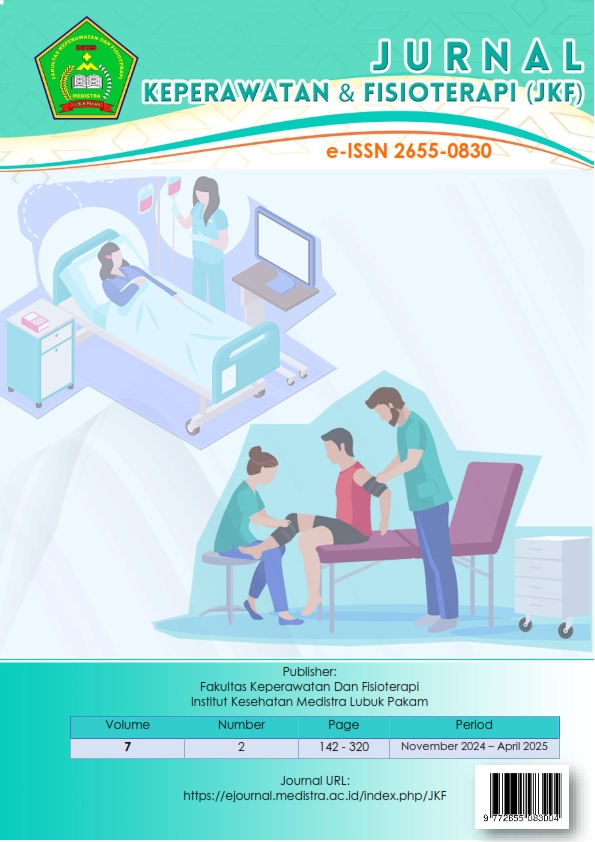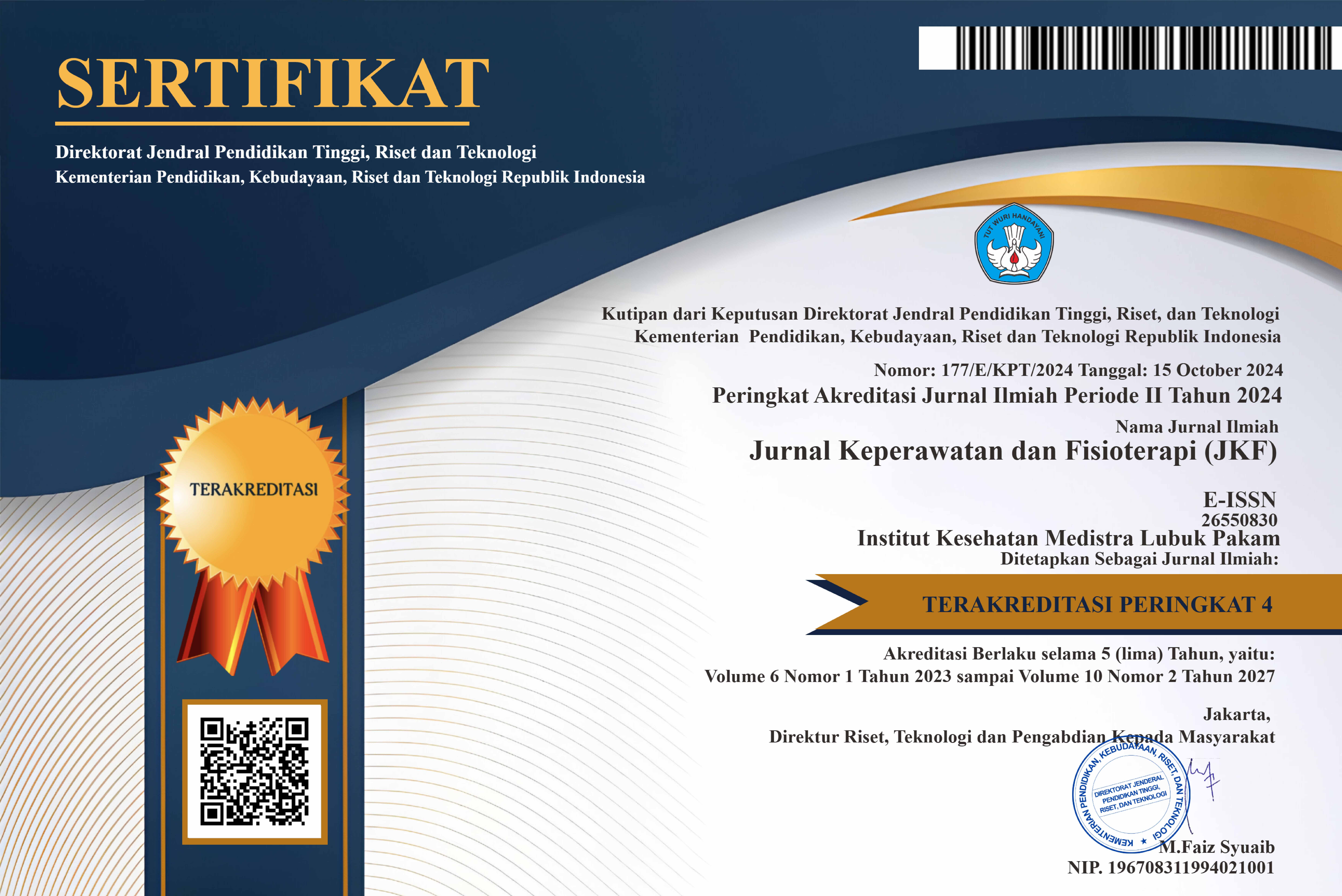Relationship of Archus Pedis With Walking Balance In Children Aged 10-2 Years at SDN 017 Candirejo Air Molek
DOI:
https://doi.org/10.35451/jkf.v7i2.2633Keywords:
Arcus Pedis, Walking BalanceAbstract
Background: WHO states the muskuloskeletal disorders disrupt the lives of hundreds of millions of individuals. The structure and biomechanics of the foot are greatly influenced by the arch of the foot. Abnormalities in the lower extremities often occur in children. Flat foot and cavus foot are disorders in the development of the arch of the foot. This condition can cause various problems, such as difficulty walking, impaired balance, easy fatigue when walking, frequent injuries, and excessive pain in the foot area. Purpose: This study aims to determine the relationship between the arch of the foot and walking balance in children aged 10-12 years at SDN 017 Candirejo Air Molek 2024. Research method This study applies a cross sectional approach design , namely , research to study the correlation between relationships with an observation approach and data collection at the same time. Results and discussion: The research results show that the variables related to the pedis arch (p-value = 0.000), walking balance (p-value = 0.000).Conslusion: Based on the research conducted that there is a relationship between the arch of the pedis and walking balance in children aged 10-12 years at SDN 017 Candirejo Air Molek 2024.
Downloads
References
Ying, Y., & Park, D. (2018). No ????????????????????? ?????????????????Title. 6–7.
Pristianto, A. & Perdana, S.S. (2023). Biomekanik Klinis. Muhammadiyah University Press: Surakarta.
Munawarah, S., Mardiah, A, Sari, M., Kesehatan,., Fort, U., & Kock Bukittinggi, D. (2021). Pemeriksaan Arcus Pedis. Empowering Society Journal, 2(3), 230-235.
Sihombing, D. P., Fiana, D. N., Wahyuni, A., & Fauzi, A.(2022). Hubungan Antara Arcus Pedis dengan Q-Angle dan Keseimbangan Pada Lansia di Panti Tresna Werdha Natar. Jurnal Agromedicine, 9(2), 92-100
Manik, N. M. M., Sugiritama, I. W., Widnyana, M., & Andayani, N. L. N. Derajat Flat foot Mempengaruhi Keseimbangan Statis Pada Anak Usia 10-12 Tahun.
Notoatmodjo, S. (2018). Metode Penelitian Kesehatan. Jakarta: Rineka Cipta
Yasmasitha, Z., & Sidarta, N. (2020). Hubungan pes planus dan keseimbangan statis pada anak sekolah dasar. Jurnal Biomedika Dan Kesehatan, 3(2), 84-89.
Trisnadewi, K. A., Winaya, I. M. N., & Linawati, N. M. (2018). Hubungan tipe arkus pedis terhadap risiko terjadinya hallux valgus pada anak sekolah menengah pertama negeri 1 sukawati gianyar. Denpasar: Universitas Udayana.
Putri, M. W., Or, S. P. M., Sabita, R., Fis, S., Nurseptiani, D., Ftr, S., & Pramita, C. A. (2021). Hubungan Kelainan Bentuk Arkus dengan Tingkat Keseimbangan Statis dan Dinamis pada Siswa. CV. Pilar Nusantara
Nurohman, M. A., Moerjono, S., & Basuki, R. (2017). Hubungan Tinggi Lompatan dan Bentuk Arcus Pedis dengan Kejadian Sprain Pergelangan Kaki pada Atlet Bulutangkis yang Melakukan Jumping Smash Correlation Between Vertical Jump and the Form of an Arcus Pedis with the Incident of Ankle Sprain in Badminton Ath. 6–29
Febriani, Y., Adenikheir, A., & Nabila, A. (2024). ARKUS PEDIS, IMT DAN FOOT POSTURE BERHUBUNGAN TERHADAP KECEPATAN BERJALAN PADA ANAK USIA 10-12 TAHUN. Maternal Child Health Care, 5(3), 908-916.
Lee, S., & Ahn, S. (2018). Effects of balance evaluation comparison of dynamic balance and Y balance. 14(6), 939-943.
Downloads
Published
Issue
Section
License
Copyright (c) 2025 Siti Sarah Bintang Sarah Bintang

This work is licensed under a Creative Commons Attribution 4.0 International License.
Copyright in each article is the property of the Author.


























